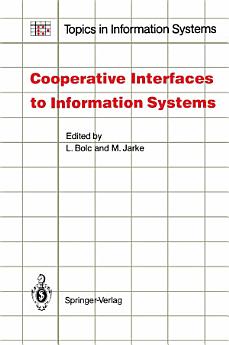Cooperative Interfaces to Information Systems
Leonard Bolc · Matthias Jarke
дек. 2012 г. · Springer Science & Business Media
Электронная книга
328
Количество страниц
reportОценки и отзывы не проверены. Подробнее…
Об электронной книге
Information systems are large repositories of factual and inferential knowledge intended to be queried and maintained by a wide variety of users with different backgrounds and work tasks. The community of potential information system users is growing rapidly with advances in hardware and software technology that permit computer/communications support for more and more application areas. Unfortunately, it is often felt that progress in user interface technology has not quite matched that of other areas. Technical solutions such as computer graphics, natural language processing, or man-machine-man communications in office systems are not enough by themselves. They should be complemented by system features that ensure cooperative behavior of the interfaces, thus reducing the training and usage effort required for successful interaction. In analogy to a human dialog partner, we call an interface cooperative if it does not just accept user requests passively or answer them literally, but actively attempts to understand the users' intentions and to help them solve their applica tion problems. This leads to the central question addressed by this book: What makes an information systems interface cooperative, and how do we provide capabilities leading to cooperative interfaces? Many answers are possible. A first aspect concerns the formulation and accep tance of user requests. Many researchers assume that such requests should be formulated in natural language.
Оцените электронную книгу
Поделитесь с нами своим мнением.
Где читать книги
Смартфоны и планшеты
Установите приложение Google Play Книги для Android или iPad/iPhone. Оно синхронизируется с вашим аккаунтом автоматически, и вы сможете читать любимые книги онлайн и офлайн где угодно.
Ноутбуки и настольные компьютеры
Слушайте аудиокниги из Google Play в веб-браузере на компьютере.
Устройства для чтения книг
Чтобы открыть книгу на таком устройстве для чтения, как Kobo, скачайте файл и добавьте его на устройство. Подробные инструкции можно найти в Справочном центре.







